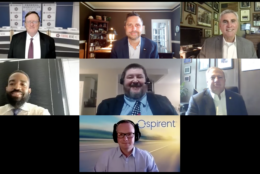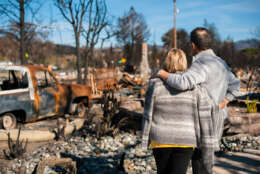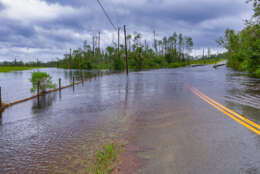Verizon
-
The Army is getting closer to fulfilling its ambitions to deliver cloud services to the tactical edge following a pilot test delivering edge computing to Guam, which Army CIO Raj Iyer described as a “grand success.” Find out what’s next.
July 05, 2022 -
The sea services want to move to a software-defined environment that will let them deliver capabilities at the edge as needed. To do that, they intend to move to a model where hardware is disposable. Learn how the Navy has evolved its network vision.
June 13, 2022 -
Through Thunderdome, DISA hopes to determine the abilities of SASE and SD-WAN to manage cybersecurity to the edge, but also knows that additional work will be necessary.
June 01, 2022 -
In addition to being a wireless carrier that millions rely on to access the internet and make phone calls, Verizon is a security leader that strives to meet the needs of public safety agencies across the United States.
May 24, 2022 -
Explore what the future of 5G in government means to you during this webinar on Wednesday, June 1st at 1 p.m.
May 20, 2022 -
The U.S. Army is called upon to help the nation not only because it has warfighting responsibilities, but also because it has vast resources and capabilities that can be utilized to assist local authorities when a disaster hits.
May 17, 2022 -
While the Montgomery County Fire and Rescue Service in Maryland is first on the scene in the event of a fire at a home or business, the department does a lot more than just respond to fires.
May 06, 2022 -
The way police investigators carry out their work is constantly changing and becoming more advanced due to technological enhancements that, not long ago, seemed far out of reach.
May 05, 2022 -
How is the Department of Homeland Security evolving its IT to meet the demands of the current landscape?
May 04, 2022 -
FEMA focuses on all aspects of emergency management, such as preparing for and responding to disasters and emergencies, working to mitigate the effects and recovering from the impacts.
April 22, 2022 -
A federal agency needed to drastically scale its ability to field incoming calls from the public, and it needed to do so almost immediately. Verizon responded with Natural Language IVR.
April 08, 2022 -
In February 2021, a massive storm spread wintry precipitation from Texas to Maine and ninety million people in 19 states were impacted. When it comes to disasters, in a large state like Texas, few things are more important than close relationships between emergency responders.
March 21, 2022 -
While the recovery from Hurricane Ida continues, Joe Valiente, Director of Emergency Management in Jefferson Parish, Louisiana said they are also focused on the future.
March 16, 2022 -
Innovative technologies that utilize existing cell technology to relay back environmental data are already in use. Some of them challenge the imagination.
March 10, 2022 -
When you think of rain forests, wildfires don’t typically come to mind. But the Director of the Oregon Office of Emergency Management said that’s changing –rapidly.
March 02, 2022















